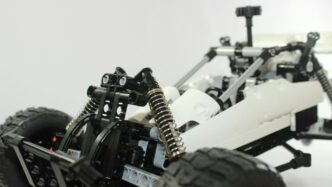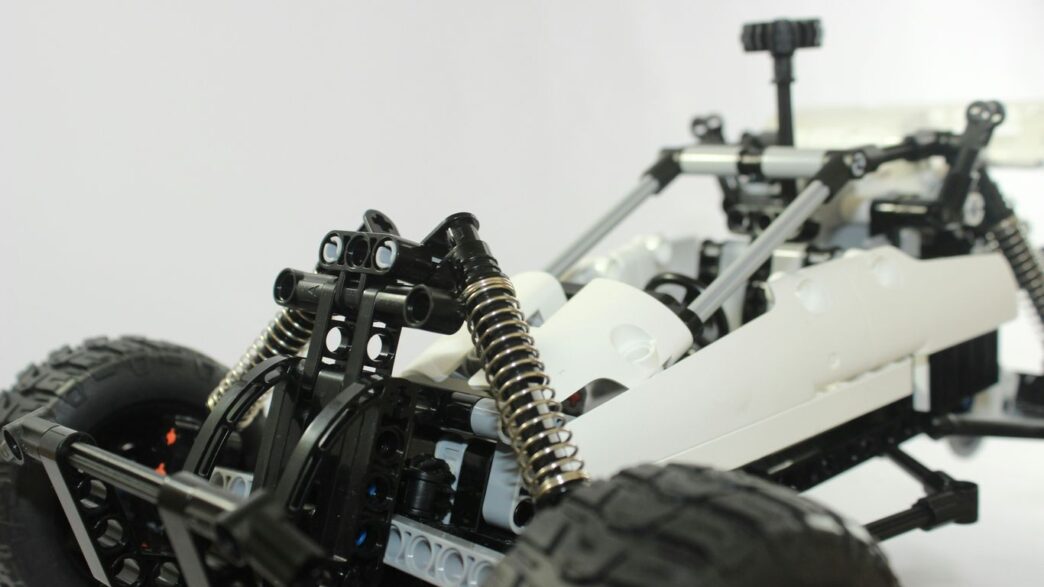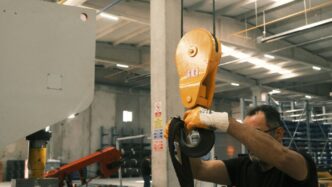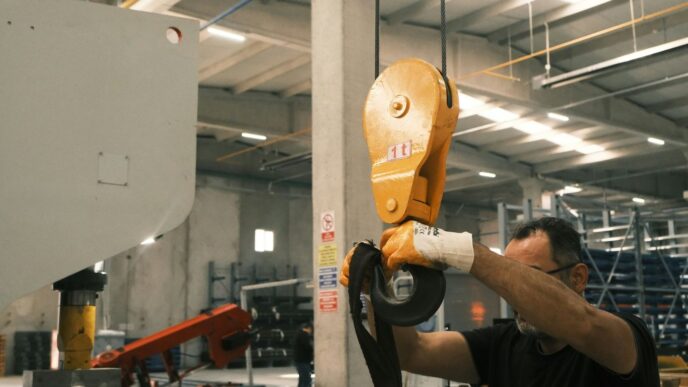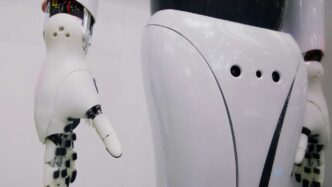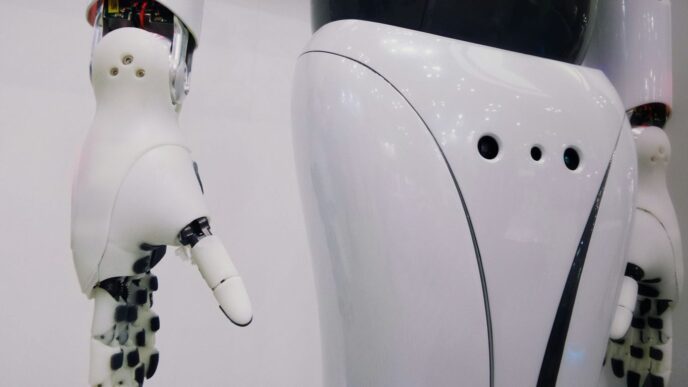Metal Frameworks and Structural Elements in Robotics

Every robot you’ve ever seen, whether it’s one zipping around a warehouse or one exploring Mars, starts with a physical skeleton. The framework is what shapes and supports the robot, keeping all its moving parts and electronics in place. Below, let’s look at what goes into those skeletons and why these decisions matter.
Common Metals Used in Robot Bodies
Metals are the go-to choice for robot frames, but not all metals act the same. Some are chosen for their toughness, others for weight or cost. Here’s a quick comparison table of metals you’ll usually find in robots:
| Metal | Strength | Weight | Typical Use Cases |
|---|---|---|---|
| Steel | High | Heavy | Industrial arms, exoskeletons |
| Aluminum | Medium | Light | Service robots, drones |
| Titanium | Very High | Medium | Space/exploration robots |
Steel is strong but heavy. Aluminum is lighter and pretty durable—good for robots that need to move fast or don’t carry heavy loads. Titanium sits at the top for strength but costs a lot more, so it’s mainly for robots that deal with harsh environments, like satellites or underwater explorers.
Lightweight Alloys for Agility
It’s not all about brute force—sometimes you want a robot fast and agile. Robotics engineers are turning to alloys, which are combinations of metals. These alloys keep things light and nimble without giving up too much strength. Common lightweight alloys include:
- Aluminum-magnesium alloys
- Titanium alloys
- Magnesium alloys
These materials help robots move more quickly, reduce strain on motors, and stretch out battery life. But they often cost more or are trickier to work with compared to regular steel.
Specialized Coatings for Durability
Robots don’t operate in a bubble—some face rain, dust, or chemicals every day. To help them last, manufacturers use coatings and treatments. Here are a few approaches:
- Powder coating protects steel from corrosion (great for outdoor robots).
- Anodizing aluminum keeps the frame from oxidizing and adds color.
- Ceramic coatings can protect from extreme heat on welding robots or space probes.
Manufacturers also sometimes choose anti-static or slip-resistant coatings for robots that handle electronics or chemicals. The right treatment means fewer repairs and more time working.
So, the next time you see a robot, remember there’s more thought behind that shiny shell than you’d expect. Every choice—from the basic metal to a special outer coating—affects how the robot works in the real world.
Electronic Components: Powering the Robotic Brain

Every robot out there has an electronic heart, and it’s this collection of electronic components that really makes the whole thing work. Without these pieces, a robot wouldn’t be more than an elaborate action figure.
Microprocessors and Circuit Boards
Microprocessors give robots their brains. They’re tiny chips, but man, do they pack a punch! They run software, make decisions, and control the robot’s every action. Circuit boards connect all the parts, making sure signals move smoothly between sensors, actuators, and controllers. Today, most robots use Arm or x86 architectures, but microcontrollers like Arduino and Raspberry Pi are popular for hobbyist projects.
Here’s a quick table to show you the comparison:
| Component Type | Typical Use | Notable Brands |
|---|---|---|
| Microprocessor | Main processing core | Intel, AMD |
| Microcontroller | Direct control, automation | Atmel, Arduino |
| SBC (Single Board) | Lightweight computers | Raspberry Pi |
Sensors and Signal Processing
Sensors are the eyes, ears, and sometimes even the skin of a robot. They collect data from the world—light, sound, temperature, even touch. Signal processors then turn those raw signals into something useful the robot can react to. And trust me, getting data is one thing—making sense of it is a different beast altogether.
Most robots use a whole mix, like:
- Cameras for vision
- Ultrasonic and infrared for distance
- Accelerometers and gyroscopes for orientation
Signal processing chips or parts of the microcontroller handle all this info, often filtering out noise and errors.
Wiring and Connectivity Solutions
All those signals and power have to travel somehow, right? That’s where wiring and connectors come into play. Inside a robot, you’ll find bundles of wires, twisted pairs for sensors, and neat cable management (okay, maybe not so neat on my projects). The higher end the robot, the more thought goes into shielding, reducing interference, and making sure everything is stable.
Some robots now use wireless solutions—Bluetooth, Wi-Fi, or Zigbee—to connect to other robots or a base station. Here’s how wiring and connectivity break down:
- Power distribution: Supplies battery or outlet power to each component.
- Data connections: Transfers signals from sensors and microprocessors.
- Communication links: With or without wires, keeps the robot connected to networks or humans.
Building the electronic brain of a robot is part trial, part error, and a whole lot of patience. It’s not always pretty (sometimes it’s downright messy), but when you see your robot respond to the world for the first time, it’s totally worth it.
Actuators and Motors: Creating Robotic Motion
If you’ve ever watched a robot arm swing into action or seen a robot race across the floor, you’re watching actuators and motors at work. These parts turn power into movement, letting robots do everything from rolling, to lifting, to snapping shut like a claw machine grabbing a prize. Basically, actuators are like the muscles for robots. Let’s break down what goes into this part of the robot and why it matters so much.
Types of Motors in Robots
There’s a surprising amount of variety here, with different motors tuned for different jobs. Some robots stick to one type, but others use a mix, depending on what needs doing.
- Electric motors: These are everywhere, especially in mobile robots and toys. The two main types are:
- Brushed DC motors (simple, reliable, easy to control)
- Brushless DC motors (better efficiency, longer life)
- AC motors: You’ll find these on big, stationary robots like those on factory assembly lines.
- Stepper motors: Handy for when robots need to move things precisely, like a 3D printer head.
Here’s a quick comparison:
| Motor Type | Where Used | Notes |
|---|---|---|
| Brushed DC | Small bots, toys | Simple, wears out quicker |
| Brushless DC | Drones, e-mobility bots | Quieter, lasts longer |
| AC | Industrial robots | Powerful, needs mains power |
| Stepper | Printers, CNC machines | Great for precise moves |
Material Choices for Actuators
The material a robot uses for its actuators (the moving bits) makes a big difference in performance and durability. Here’s what pops up most:
- Metals: Steel and aluminum are go-to picks for strength and stiffness. They hold up, but can be heavy.
- High-strength plastics: Used more and more in actuators where you want to cut some weight but don’t want to lose all the strength.
- Rubber and composites: These sometimes get mixed in, especially if the part needs to flex or grip.
Hydraulic and Pneumatic Systems
Not every robot sticks to electric motors. For really big muscles (think robot arms hoisting car parts), you’ll see hydraulics and pneumatics, which use liquids or gases to push parts around. Here’s how they fit in:
- Hydraulic Actuators: Use pressurized oil or other liquids. Super strong—great for lifting, but a bit bulky, and they can leak.
- Pneumatic Actuators: Run on compressed air. Faster and lighter than hydraulic ones, but don’t pack as much punch.
- Electric Linear Actuators: These act like pistons, but get power from electricity. Clean, easy to control, and found all over the place in automation.
You can spot these in action on heavy-duty robots in car factories, or even soft robots using air bladders to squeeze and move. Robots sometimes mix and match, depending on what the task needs — it’s not one-size-fits-all.
Anyone designing a robot has to pick the right setup for the job. That means weighing speed, power, size, cost, and even how easy it is to keep things running over time.
The Role of Sensors: Giving Robots Their Senses
Sensors are what make robots more than just moving machines—they’re what let robots interact with their world, almost like humans and animals. Without sensors, robots would be pretty clueless, unable to recognize objects, steer clear of danger, or even know if they’ve bumped into a wall. Let’s get into the different types of sensors that help robots perceive everything around them.
Vision Systems and Cameras
Robots see thanks to all sorts of camera setups:
- 2D Cameras: These are the simplest, capturing flat images, handy for detecting shape and color but not depth.
- 3D Cameras: Multiple cameras or structured-light sensors allow robots to gather depth information—kind of like how you close one eye, and then the other, to judge distance.
- LIDAR (Light Detection and Ranging): This tech fires out tiny pulses of laser light to build 3D maps of the environment. A lot of self-driving cars use this tech.
Here’s a short table of some widely used robot vision solutions:
| Technology | What It Captures | Typical Uses |
|---|---|---|
| 2D Camera | Images (no depth) | Barcode reading, sorting |
| 3D Camera | Images + depth info | Grasping, navigation |
| LIDAR | Distance to surfaces/objects | Mapping, obstacle avoidance |
Tactile and Proximity Sensors
Robots also need to ‘feel’ and notice things nearby, not just see them:
- Tactile Sensors: These can sense pressure, force, even texture. Some advanced tactile arrays mimic human fingertips, letting a robot gently pick up a grape or hold a heavy box.
- Proximity Sensors: Great for short-range detection, these can be optical (using light), capacitive (measuring electrical properties), ultrasonic (bouncing sound waves), or even infrared.
- Application: A bump sensor on a vacuum robot tells it to back up and turn when it hits a chair leg. Proximity sensors stop a robot arm before it squishes your hand.
A lot of designs use multiple types of proximity sensors for reliability. It’s not uncommon to see both an optical and an ultrasonic sensor on the same robot.
Audio Sensors and Environmental Awareness
Robots can listen, too. Microphones, sometimes in groups (called arrays), help detect and process sounds:
- Simple listening: Robots pick up voice commands or listen for alarms.
- Sound localization: By comparing the time sound hits different microphones, a robot can figure out where a sound came from.
- Environmental Sensing: Some robots, like those roving Mars, even carry sensors for temperature, humidity, and gas levels—important for both safety and collecting useful data.
Why does this matter? The more a robot can sense, the more independent and reliable it can be at doing all sorts of jobs—packing boxes, cleaning floors, searching disaster areas, or just not running into people. It’s these sensors that give robots their awareness of the world, for better and for worse.
Energy Sources: How Robots Stay Powered
Robots, like us, need energy to function. But instead of sandwiches and coffee, robots get their energy from a range of power supplies. How a robot is powered shapes everything from how long it runs, to how strong or nimble it is. Some robots stay plugged in, while others rely entirely on batteries. Even solar panels or more experimental technologies can play a role. Choosing the right energy source is a balancing act between weight, performance, and running time. Let’s look at the main ways robots get powered up.
Battery Technologies for Robotics
Most robots you’ll find today run on batteries—especially anything that moves around. There’s a surprising amount of choice here, and each battery type comes with its own quirks:
| Battery Type | Pros | Cons | Common Uses |
|---|---|---|---|
| Lead-acid | Safe, cheap, long shelf life | Heavy, bulky | Industrial, educational |
| Lithium-ion | Lightweight, high capacity | Can overheat, more $$ | Drones, mobile robots |
| Silver-cadmium | Small, durable, long-lived | Expensive, harder to find | High-end devices |
Some factors matter more than others depending on the robot. For example, weight is a huge issue for drones, so lithium-ion is popular there. For something plugged into an assembly line, weight matters less, so lead-acid might be fine.
Wired Versus Wireless Power Supplies
Not all robots need to lug their power around. Some, like big factory arms, just stay plugged in through a wire. Here’s how the two main setups break down:
- Wired Power:
- Wireless (Battery/Solar):
Some robots also mix things up: for example, a solar robot might use the sun for main power, but keep a battery as backup for cloudy days.
Emerging Power Solutions for Autonomous Robots
People are always coming up with wild new ways to power robots. Maybe one of these will be the big thing in a few years—who knows?
- Fuel cells – They act like a mini power plant, converting hydrogen into electricity. Mostly used in bigger or experimental robots right now.
- Solar panels – For robots that spend their time outside, solar panels can help stretch battery life. Great for things like planetary rovers.
- Pressure systems (hydraulic or pneumatic) – Instead of electricity, some robots use pressurized liquid or air for short bursts of movement. This is more common in heavy machines.
- Organic sources – Researchers have even tested robots running on “garbage gas” from digesting organic waste.
That said, reliability and safety still keep most robots on good old batteries, at least for now. But give it time—robot energy may change just as fast as robots themselves.
Programming and Software: The Invisible Material
You rarely see it, but software is absolutely at the core of every robot out there. Without a program telling it what to do, a robot is basically just a pile of hardware pieces that don’t know what comes next. Think about it—motors, metal frames, sensors: they all sit useless unless some code makes decisions and moves things along. Here’s how programming and software fit into the robot equation.
Embedded Operating Systems
Most robots run on real-time operating systems (RTOS) or embedded OS options. These systems have a few jobs:
- Scheduling tasks so that movement, sensing, and reacting all happen on time.
- Managing limited resources because, in robotics, space and power are always tight.
- Offering drivers for hardware like cameras, motors, and sensors, so programmers don’t have to talk to raw circuits.
| OS Type | Common Use | Example |
|---|---|---|
| Real-Time OS (RTOS) | Industrial robots, drones | FreeRTOS, VxWorks |
| Lightweight Linux-based | DIY, hobby, research bots | Ubuntu Core, ROS |
Machine Learning and AI Algorithms
Robots have moved well past simple if-this-then-that instructions. Many use algorithms that can learn and get better over time, or adapt to changing environments. Here are some ways robots use AI:
- Object recognition: Spotting and sorting items on an assembly line.
- Navigation: Mapping the room and planning a path in a robot vacuum or warehouse bot.
- Behavior adaptation: Adjusting grip strength or speed if something unexpected pops up.
All this happens by combining huge amounts of data with algorithms that tweak how the robots behave without needing a coder to reprogram every time.
Safety and Control Protocols
Safety is one area no robot owner wants to ignore. Robots, especially industrial ones, can be strong and fast—so even a small programming error could cause harm or damage. Most modern robots use layers of software to make sure they:
- Stop operating if a human gets too close.
- Limit the force they apply, so delicate parts aren’t crushed.
- Log errors and status changes for easy troubleshooting.
But it goes further—there are often emergency stop protocols, remote shut-down abilities, and even software that checks itself for bugs before running critical tasks.
At the end of the day, you could swap out the metal or change the batteries, but if the software doesn’t work, that robot won’t be going anywhere. The invisible logic behind every motion is what lets robots be more than just machines—they become adaptable, responsive helpers in our world.
Specialized Materials in Advanced Robots
As robots take on roles that go far beyond the factory floor, regular metals just don’t cut it anymore. Advanced robots often call for materials you don’t see every day—things that allow them to bend, flex, sense the world with finesse, or even repair themselves. Here’s a closer look at some of the wild materials reshaping the field.
Flexible Polymers and Soft Robotics
Soft robotics isn’t just a buzzword—it’s a whole new design approach that’s changing what robots can do. Flexible polymers, like silicone rubber or thermoplastic elastomers, are at the heart of this trend. They let robots:
- Squeeze into tight spaces without damaging delicate items
- Move in ways that mimic living creatures
- Absorb impacts, making them safer for working around humans
One example is electroactive polymers (EAPs). Give these plastics a zap of electricity, and they shrink or expand, so they act like artificial muscles. These materials are already being used in soft robotic grippers and even some experimental humanoid faces.
Biomimetic and Smart Materials
Robotics researchers are obsessed with nature—because, honestly, animals do a lot that machines can’t. Materials inspired by biology (biomimetic) and those that respond automatically to their environment (smart materials) are shaking things up:
- Shape-memory alloys: Metals that remember their original shape and return to it when heated. Handy for self-healing joints or flexible frames.
- Piezoelectric ceramics: Stuff that generates electricity if bent, or changes shape when an electric field is applied—super useful for tiny motors, sensors, and precise movement.
- Self-healing polymers: Plastics that patch themselves when cut or scratched, which means less downtime for maintenance.
Here’s a table showing how a few smart materials behave:
| Material | Trigger | Response |
|---|---|---|
| Shape-memory alloy | Heat | Changes shape |
| Piezoelectric ceramic | Pressure/Voltage | Sense/move |
| Self-healing polymer | Cutting/Heating | Repairs damage |
3D Printing and Custom Fabrication
Old-school manufacturing hits a wall when every robot part needs its own custom shape or flexibility. 3D printing changed all that, especially for advanced robots. Now, making a one-of-a-kind part is as easy as sending a new file to the printer.
Here are a few advantages of 3D-printed materials in robotics:
- Super complex shapes—no problem.
- Rapid prototyping speeds up the design-test-redesign loop, making innovation quick.
- Lightweight structures that stay strong—print hollow frameworks or tricky internal parts.
Some labs are even mixing materials (plastic, rubber, metal) in a single print, creating robots that are sturdy, bendy, and even conductive right out of the printer. The result? Machines that look nothing like old industrial arms, yet can handle tasks from surgery to disaster relief.
So, as robots get smarter, their materials get weirder—soft, self-fixing, and printed to order. It’s a wild time to be building the future.
Conclusion
So, after looking at what robots are made of, it’s clear they’re a mix of clever design and practical materials. From sturdy metal frames to flexible plastics, from tiny sensors to powerful motors, every part has a job. The brains of the operation—the software and control systems—bring it all together, telling the robot what to do and when. It’s kind of wild to think about how much goes into even the simplest robot, whether it’s vacuuming your living room or exploring Mars. As technology keeps moving forward, the materials and parts will keep changing, too. But at the end of the day, robots are just tools we build to help us out, made from stuff you might find in a workshop or a high-tech lab. Who knows what they’ll be made of next?

